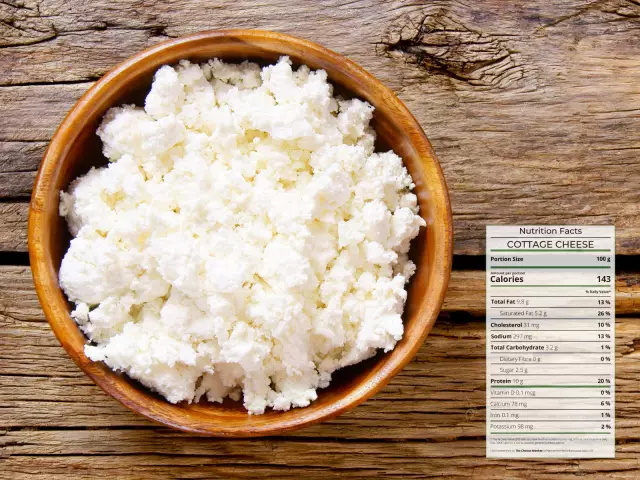- Author Rachel Wainwright [email protected].
- Public 2023-12-15 07:39.
- Last modified 2025-11-02 20:14.
Goat cheese

Most researchers agree that goat's milk cheese was first prepared over 10,000 years ago in Asia. However, it was only in the 13th century that the recipe for its preparation penetrated into Europe. The first to appreciate the unusual taste of goat cheese were the Romans, who brought the recipe for this product to the Moors. Following them, many peoples living on the territory of modern Europe became admirers of goat cheese. In those days, goat's milk cheese was not considered a delicacy, it was served with almost every meal and was consumed in large quantities.
Today, the attitude towards goat cheese has changed in proportion to the increase in its price. This expensive pleasure is classified as a delicacy. Is it surprising that France is considered the leader in its production - a country famous for ancient and traditional recipes for cheese making, where the choice of goat cheese varieties is truly incredibly wide.
The variety of cheese varieties based on goat milk is determined primarily by the degree of aging. Of course, both the gustatory and aromatic nuances of a delicacy are also highly dependent on its age. The snow-white color, incredibly delicate taste and consistency of mousse melting in your mouth are characteristic of young goat cheese. With age, the cheese acquires a dense structure, and the specific, spicy flavor of goat milk also intensifies.
The preparation of goat cheese begins with the selection of milk, to which certain requirements are imposed: sufficient fat content and aroma. Milk, placed in a special container, is heated to 33 degrees, after which a special leaven is added to it. The next 24 hours pass while waiting for the cheese to acquire a curdled consistency. After that, the cheese is manually laid out in molds. As it gets thicker and the whey is completely drained, the almost finished goat cheese is placed in the cellar where it is to mature. The room where the delicacy is brought to the desired degree of maturity is carefully maintained at a constant temperature as well as humidity. Such strict adherence to technology is necessary in order to provide the necessary conditions for microorganisms, thanks to which goat cheese becomes a finished product. Finally, the ripened cheese is dried, giving it its familiar presentation. Freshly ripened, fresh goat cheese is characterized by its lack of flavor and almost perfect whiteness. Just a week after the drying process is complete, goat cheese takes on its characteristic and so beloved by many flavor.
Goat cheese goes well with many products and is suitable for various types of thermal processing. So, young and soft cheese melts perfectly on the grill, it is also added to appetizers and salads to add spicy notes. Aged goat cheese, which is characterized by a strong aroma and pronounced flavor, is recommended for use in doses.
All types of goat cheese are stored in hermetically sealed plastic bags or boxes.
The composition and calorie content of goat cheese

Goat cheese is a storehouse of useful minerals. In the first place is sodium, the content of which in 100 g of the product reaches 1900 mg. The amount of calcium in the composition is half the amount - 740 mg. In addition, goat cheese contains zinc, iron, copper, potassium, phosphorus, and magnesium.
Vitamins found in goat cheese: PP, E, C, H, B12, B9, B6, B1, B2, B5, A.
The calorie content of goat cheese is 290 Kcal, which are the sum of the following indicators: about 21 g of protein, 22 g of fat and 1 g of carbohydrates.
The benefits of goat cheese
First of all, the benefits of goat cheese are determined by the presence of lactic acid bacteria in it. Numerous studies have shown that the organisms contained in any type of goat cheese are completely identical to those found in “live” yoghurts. In 1 g of the product, their number reaches 107 units, the content of lactic acid is enormous - about 99%. These microorganisms are valued due to their ability to have an antibacterial effect, as well as for the presence of properties that equate them to antibiotics.
Few people know, however, the nutritional properties of goat cheese are much higher than its counterpart, made from cow's milk. The digestibility of goat cheese is much higher than that made from cow's milk. In addition, it does not cause allergies and contains several times more vitamin A. Regularly eating goat cheese can significantly improve the condition of teeth, bones, and also normalize blood pressure.
Found a mistake in the text? Select it and press Ctrl + Enter.






